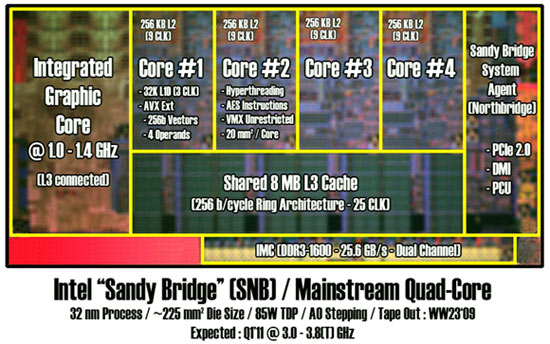Case in Point: The Best CPU Under $300
Future Growth & Performance Considerations
Secondary Considerations: Future Growth
Now, Intel’s next generation architecture – the true successor to Nehalem – is code named Sandy Bridge. What’s known is that some variant of Sandy Bridge will offer four cores and be LGA 1156. Whether they’ll work in existing motherboards is an open question. Intel’s past suggests otherwise. When Core 2 shipped, relatively few LGA 775 motherboards capable of running Pentium 4 or Pentium D CPUs could run Core 2 CPUs, even though the socket was the same.
When I build a system, I like to believe that I can eventually drop in a new, faster CPU as the manufacturer releases updated, higher clocked versions of that processor. The bifurcation of Intel’s desktop CPUs into two different sockets has really muddied the waters. Given what Intel has publicly revealed of its CPU roadmap, here’s the growth path for Bloomfield and Lynnfield:

Performance Considerations
So it’s tough to figure out what to get, if you’re concerned about future growth. So we’ll fall back on performance: which CPU actually performs better? Core i7 860 has a 133MHz clock speed advantage, but only supports two memory channels. On the other hand, i7 860’s Turbo Boost capability is more sophisticated than the 900 series, with five bins for single thread apps, versus the 920s default two bins. Similarly, two execution threads can get up to four bins of boost, while Bloomfield only manages two.
That means that if you’re running single or dual threaded tasks on a system that’s otherwise relatively idle, the single core under stress on Lynnfield will spool up to a higher clock speed than Bloomfield.
Also, overclocking is less relevant. What overclocking will get you is better performance on three and four threaded tasks – and that’s still relatively uncommon in most day-to-day use. If you use a good CPU cooler, and have good airflow through the case, you’re already guaranteed by Intel to get 4 – 5 bumps in clock speed during dual and single threaded execution. No voltage tweaks, no experimenting with BCLK, none of that stuff needed.
One other factor that comes into play is memory bandwidth. By default, Lynnfield’s DDR3 controller handles 1333MHz DDR3. Bloomfield’s DDR3 controller is rated at 1066MHz. That makes up for the triple channel bandwidth advantage somewhat, though theoretically, Bloomfield has an edge in raw bandwidth.
Note that the actual disparity in clock frequency is only a little over 5% -- 5.26% to be more précis. In the past, a clock speed jump of about 5% might show some minor performance bumps, but nothing to write home about. But what’s the practical effect of Lynnfield versus Bloomfield? Let’s look at a few benchmarks.






